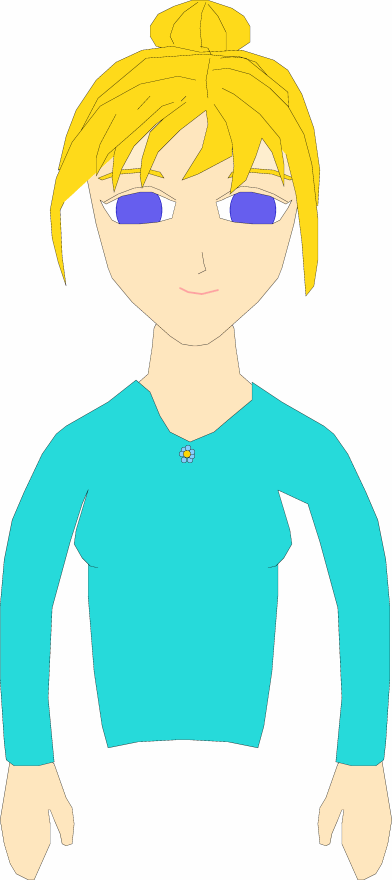
Feb 18, 2004 by Javantea
Greetings. Today's MoHM is about how to skin an object. We will not actually skin a 3d object today, but rather take a 2d object and I will explain what it means to make a skin for a 3d object.
Above is the source image. It is a character sketch that was originally drawn and scanned. It was traced in XFig for Linux. I used XFig because it is the best vector graphics that I know of for Linux. I could have used The GIMP instead, but I have trouble with using a raster program for what should be scalable graphics.
Really creating the skin was terribly easy. See below.

The idea is to get something that is cylindrically mappable. What does that mean? It means that front to front which is connected to sides which is connected to back. It can be linearally interpolated from front to side to back. That way the Texture Coordinates are applyable. Milkshape3D lacks the ability to do cylindrical mapping (to my knowledge), but I bet a plug-in will be written one day. The solution is just to select vertices and scale them to the correct positions.
So how do I make a character sketch cylindrically mappable? Well, I start with the front because that is where the detail is. I put it where it should be. I move the back away if it exists. I draw a back of the head, usually just hair, split it in half and put it on the sides. Then I think a bit about the sides. Ears (which this skin lacks currently), hair, etc should be taken into account.
The next thing is to color in the white parts. I haven't done that on the image above, but imagine with me. The next step will have to be skinning the 3d object. I skin it and I find out the one constant in art: it looks good and bad at the same time. That isn't a problem, it just means that I have work to do. Go back and mess with the skin until the 3d model looks good. The skin doesn't matter so much as how it makes the 3d model look.
One thing an artist must remember about skinning is pixelization. If a skin is too low resolution, pixels will be visible from close range. It's not good to use large textures for everything, so the answer is quite simply to use the standard resolution (512x512 or so) and use what tools you have to draw attention away from the pixels.
Good luck.
 Permalink
Permalink
-
Leave a Reply





Comments: 0
Leave a reply »